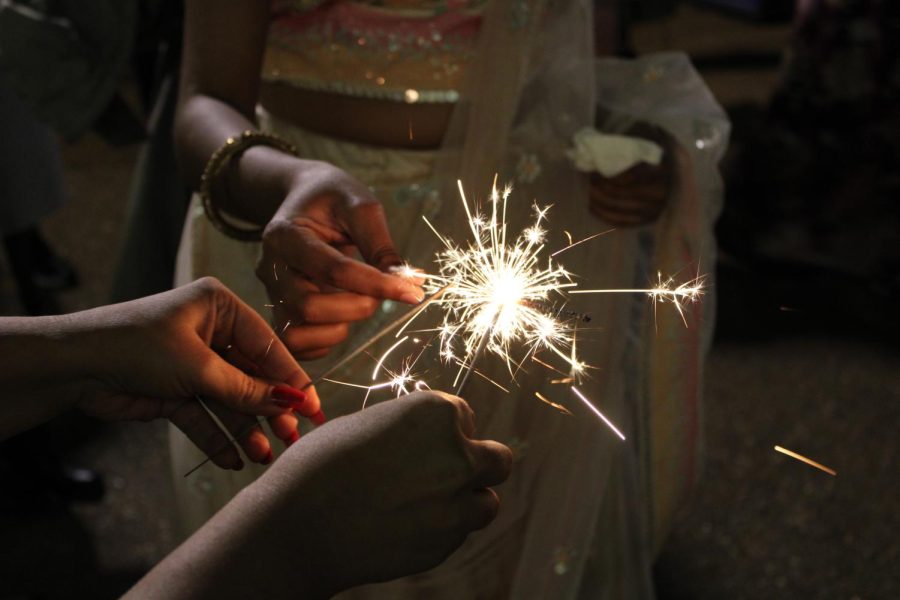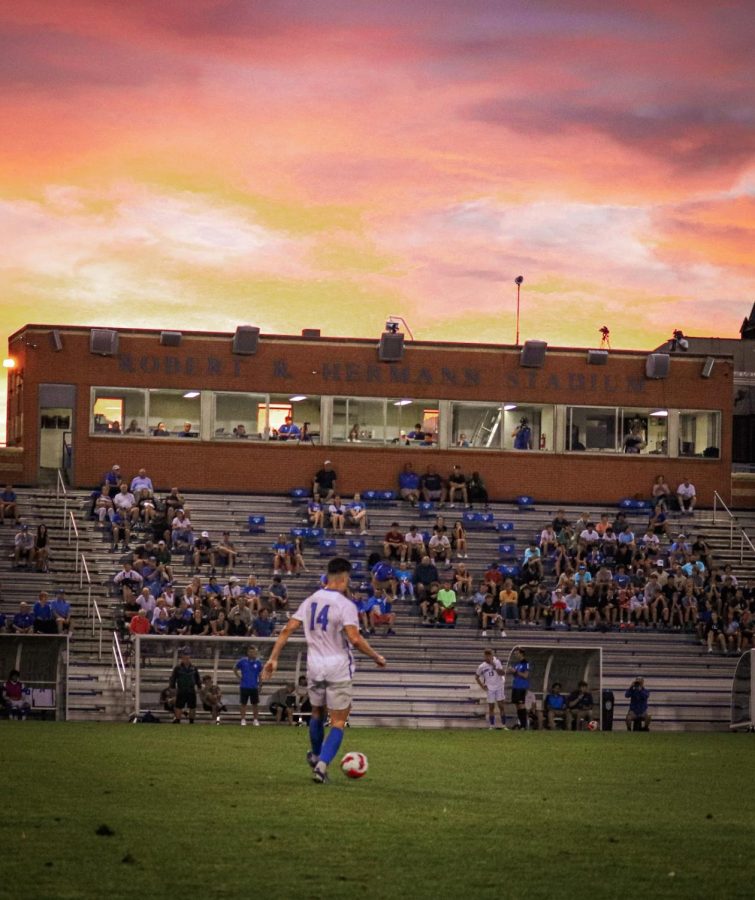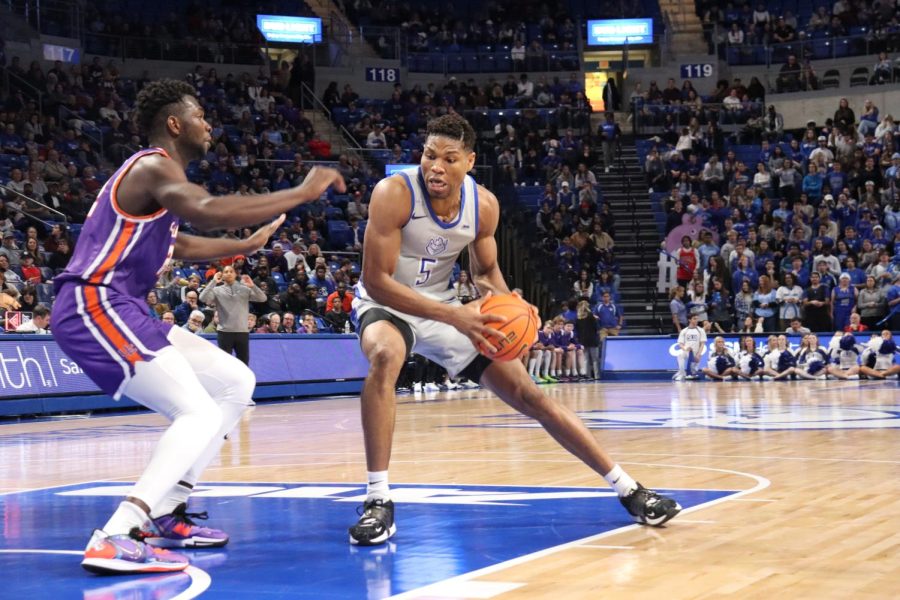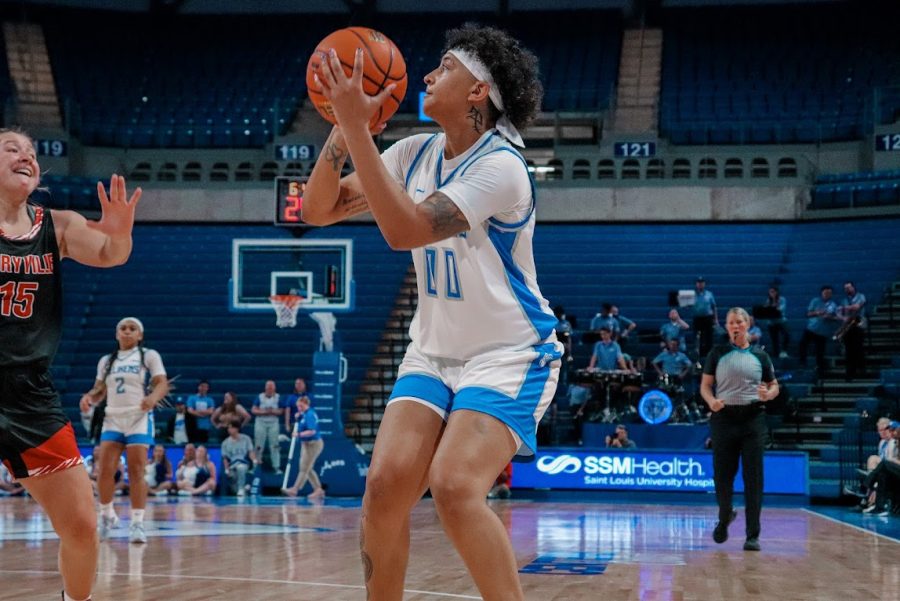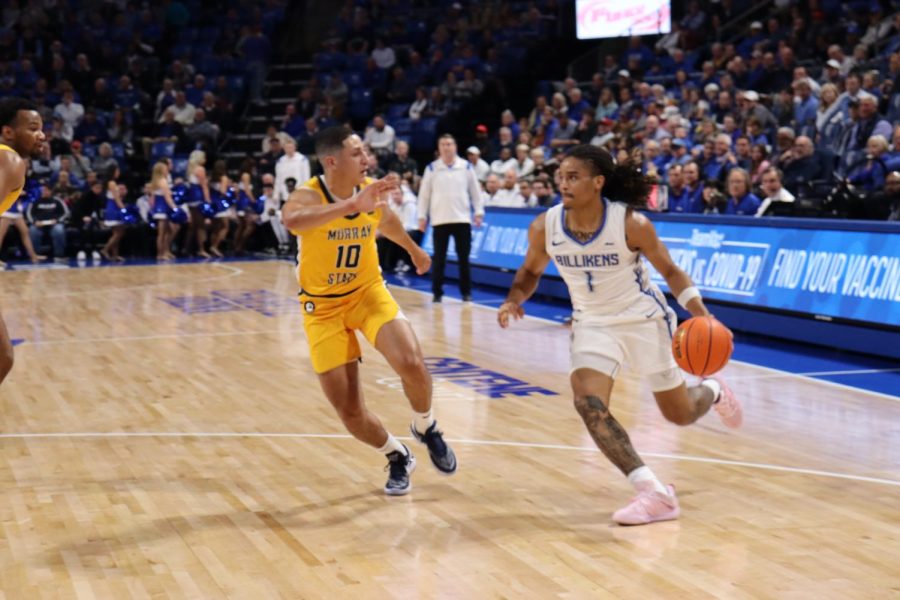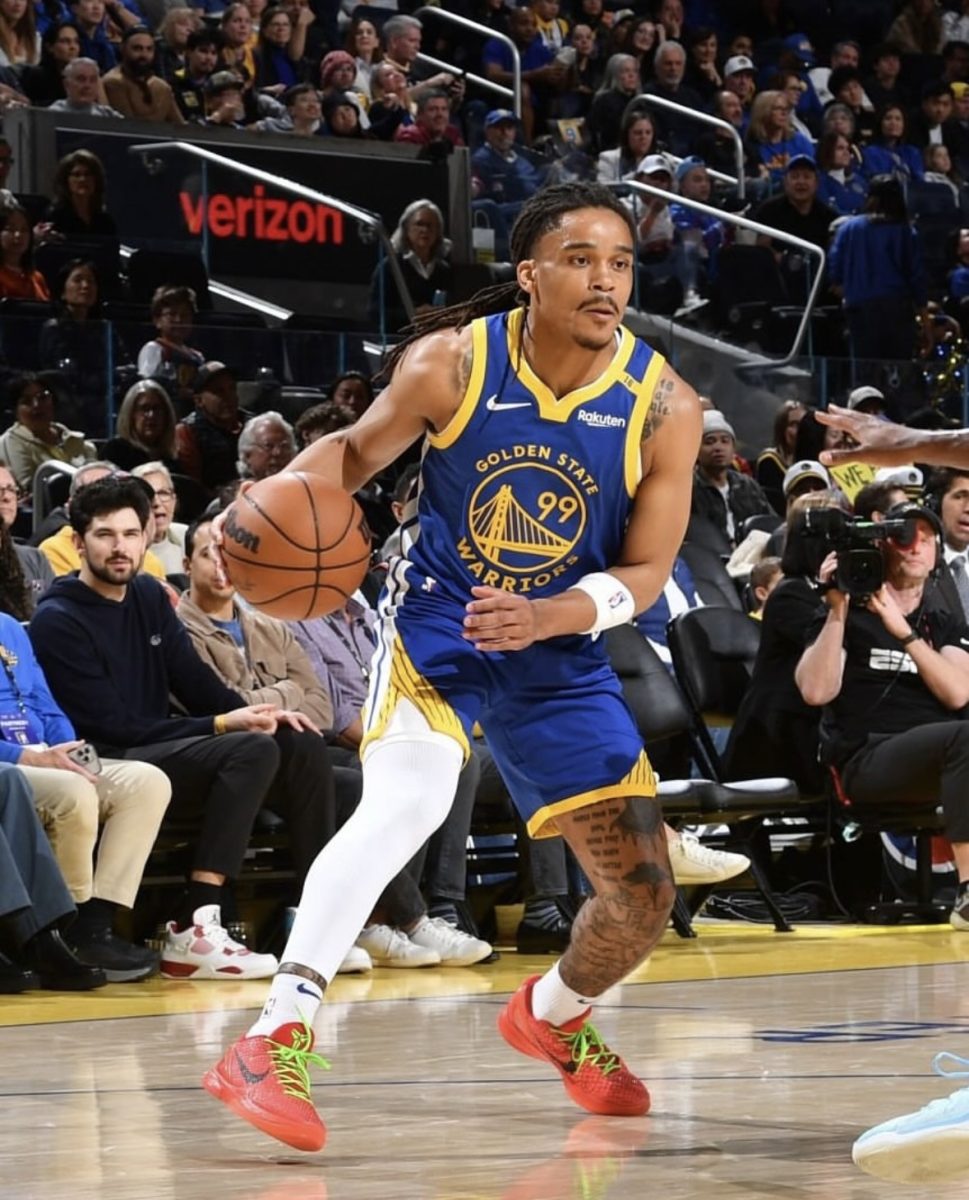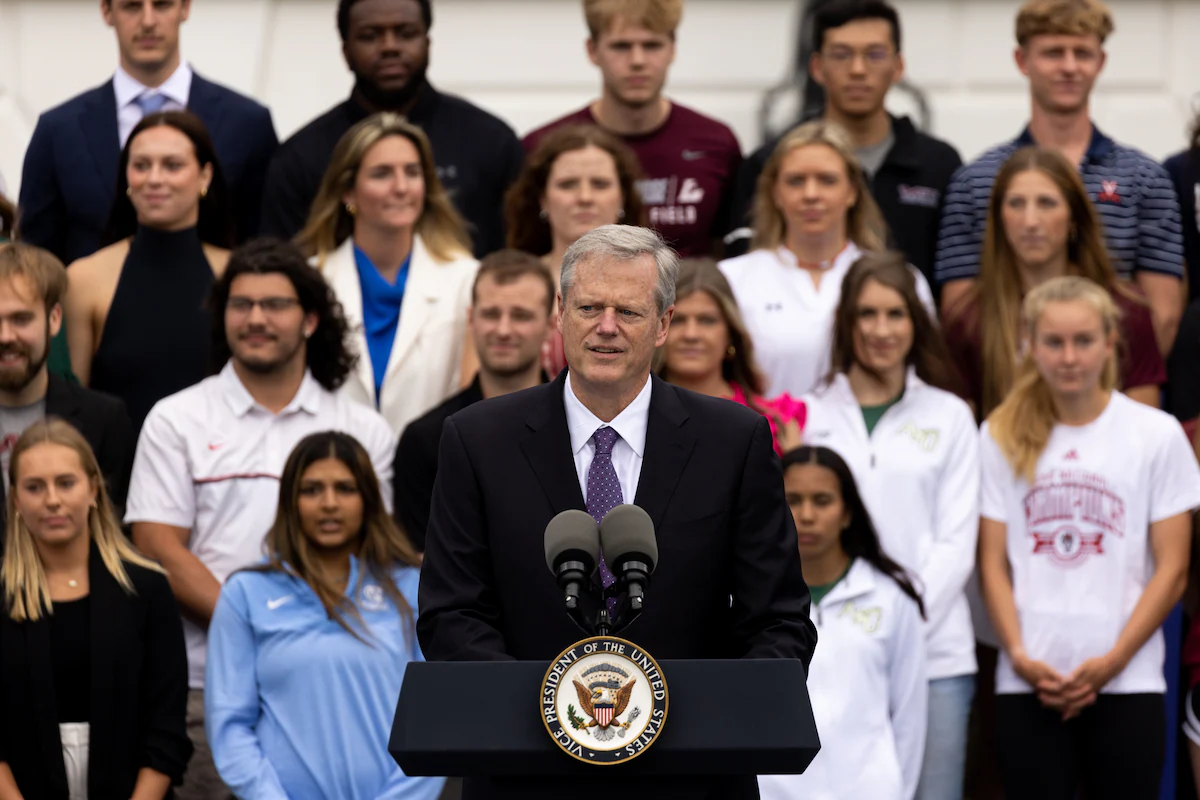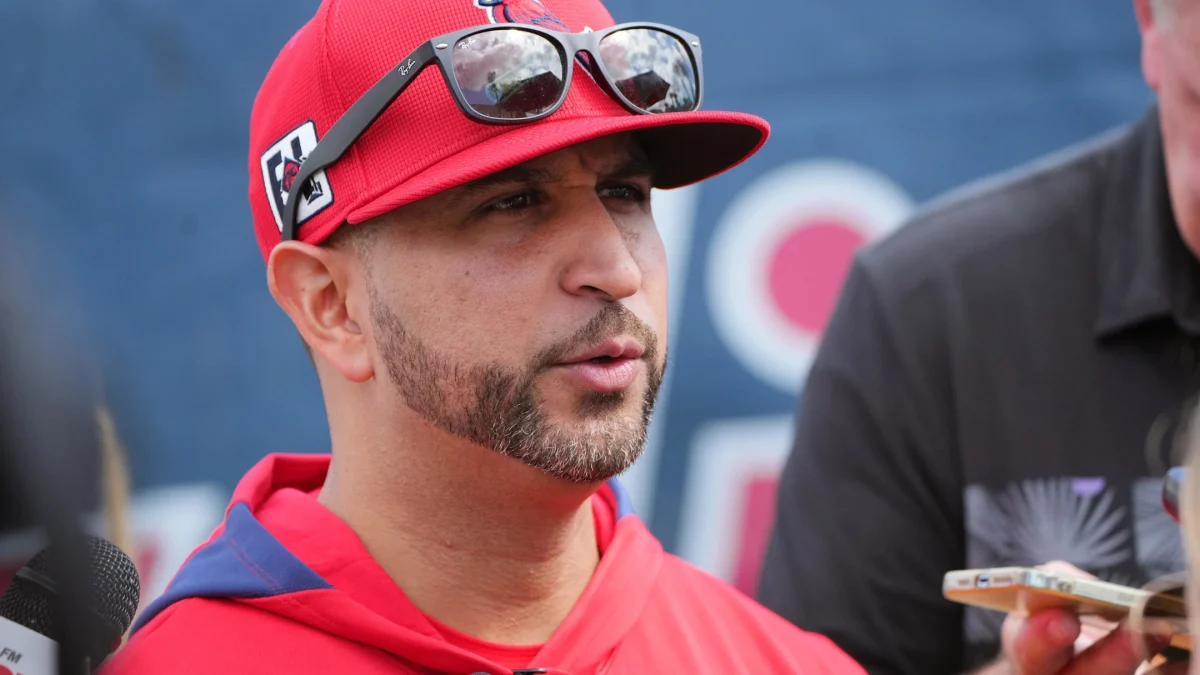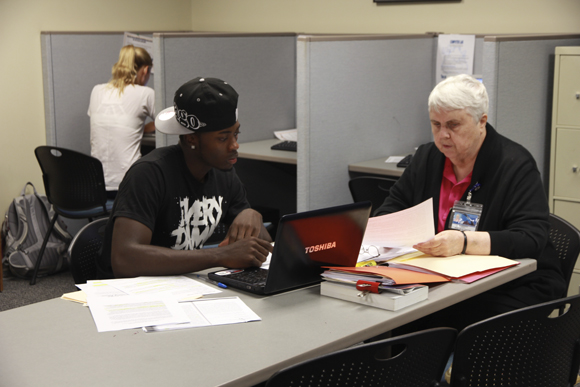
Players balance time between Chaifetz, classrooms and dorms
Wake up!
It’s 7:30 a.m., time for your morning workout.
Welcome to the life of a Division I student-athlete. Early morning workouts, weekends away from St. Louis and hours of practice to keep skills sharp are all understood as part of the commitment. It is delicate work trying to find a balance between studies, sport and relaxation. This is the case especially during midterms week. For freshmen athletes, there’s the added pressure of adjusting to a completely new lifestyle while still maintaining good grades and a steady work ethic.
“I have a lot less free time in college since I am putting in more hours for practice and workouts. Also, college classes require more studying than in high school, so I’m much more crunched on studying time,” freshman tennis player Brooke Urzendowski said. It’s the same lessons all college students learn as they go through their freshman year, except multiplied by two. Athlete by morning, student by afternoon, athlete by evening.
For sophomore tennis player Nishaad Balachandran, it’s all about “being more professional when it comes to academics or tennis.” Every minute is valuable, and time wasted is time falling behind. However, Balachandran mentioned that finding a balance between school and tennis has become a bit more manageable. “I have been balancing tennis and my work for my entire life now, and it has just become routine to me,” he said.
“A technique that I have perfected over the years is the use of my athletic planner. Without a doubt, it is the most helpful thing that has got me to organize my time,” senior basketball team player Brian Conklin said. Conklin’s words carry much weight, as he managed to earn his undergraduate degree in just three years, and is now well on his way to earning his M.B.A. from the John Cook School of Business.
After these early morning workouts, it is time to hit the showers and go to class with other college students. It’s 2 p.m. now. Time to kick back and relax after class, right? Wrong. Get ready for a couple hours of practice before relaxing and getting started on homework for the next day.
Conklin has adopted a study first attitude, admitting, “Basketball sometimes gets put on the backburner.”
“I find myself having to burn the midnight oil at certain points during the season to make sure I get things done that need to be done. To some extent, this affects how I perform in practice and may even translate to the game. It is something I have had to manage over the years,” Conklin said.
Balanchandran has taken a much different approach to staying motivated.
“I have always maintained that my education is important but not as important as my tennis. I live and breathe tennis,” Balanchardan said.
While every day demands the most of each athlete, few have any regrets.
“While I value my education, I never look at tennis as an obligation or something that takes up a lot of my time,” Balachandran said. “I have never regretted picking up a racket at any point of time. College tennis has given me the continuing chance to spend time on a court and I will never regret that choice in my life.”
This doesn’t even take into account an athlete’s “offseason,” in which they still work out and train daily. Over the summer, athletes from many sports take classes to lighten their load during the fall and spring semesters.
“When the summer rolled around, I would take a total of nine credit hours instead of just six to gain another advantage,” Conklin said. In addition, this summer, the basketball team was allowed 10 practices to prepare for their five game tour of Canada in the middle of August. These extra practices will no doubt be seen as invaluable as the basketball season approaches. There is no summer break for the athlete; it is a year-round commitment to become the best student and athlete possible.
In a culture that increasingly values athletic achievement over academic excellence, it can be hard for athletes to stay grounded.
“I was brought up being taught the value of an education will pay more dividends in life than a life in sports could ever provide,” Conklin said. “I always worked hard to better myself as a student and throughout my years was able to build good study habits that translated nicely to my future educational endeavors. For me, it was family values that I was brought up in that really helped keep education a priority.”
“I am one of the lucky people in this world who knows what they want from life and has the opportunity to continue doing it,” Balachandran said of his ability to play college tennis.
When Urzendowksi or Balachandran step up to the base line, the last thing on their mind is the exam they took the previous week or the research paper due the next week. When Conklin lines up a three-pointer from deep, he’s not thinking about his next group meeting to finish a mock business proposal. But when these athletes are done focusing on the court, they must find the mental focus to stay up-to-date with their schoolwork.
Many people in the general student body still do not fully comprehend the commitment being a Division I athlete takes. Many grew up playing sports their entire adolescent life and do not think college sports are much different.
“It may look like there are a lot of perks,” Urzendowksi said, “but it is very time consuming and stressful.”
Being a student-athlete is an experience unlike any other college experience that few are lucky enough to experience. Then again, “[SLUper Bowl and SLU tennis] are pretty similar when it comes to school spirit,” Urzendowksi said. “My teammates constantly cheer each other on during workouts or matches and the sororities exhibit that same type of loyalty to their sorority during SLUper Bowl.”
Some days, after a long practice, the last thing an athlete wants to do is crack open a book and study.
Tired?
Hit the sack, you’ll have to do it all again tomorrow.






